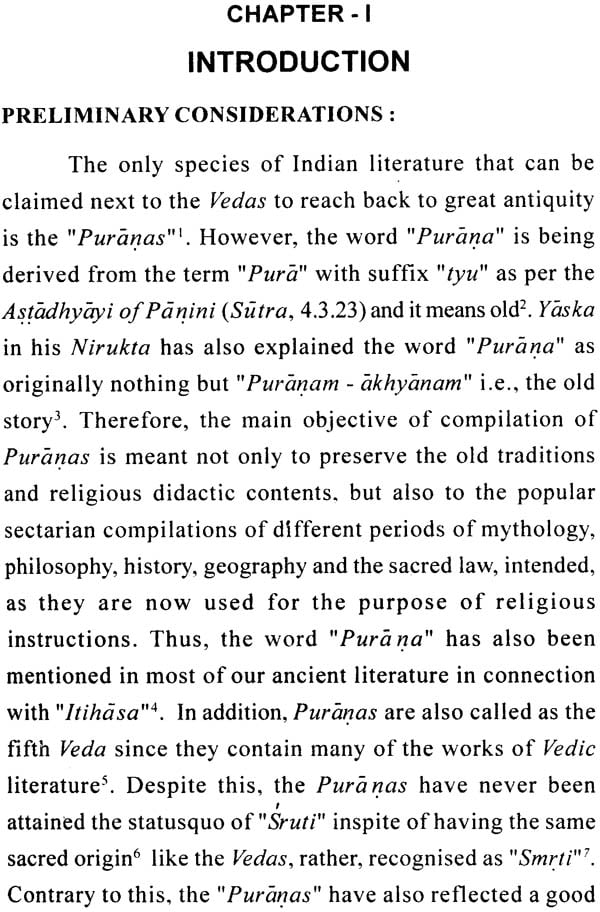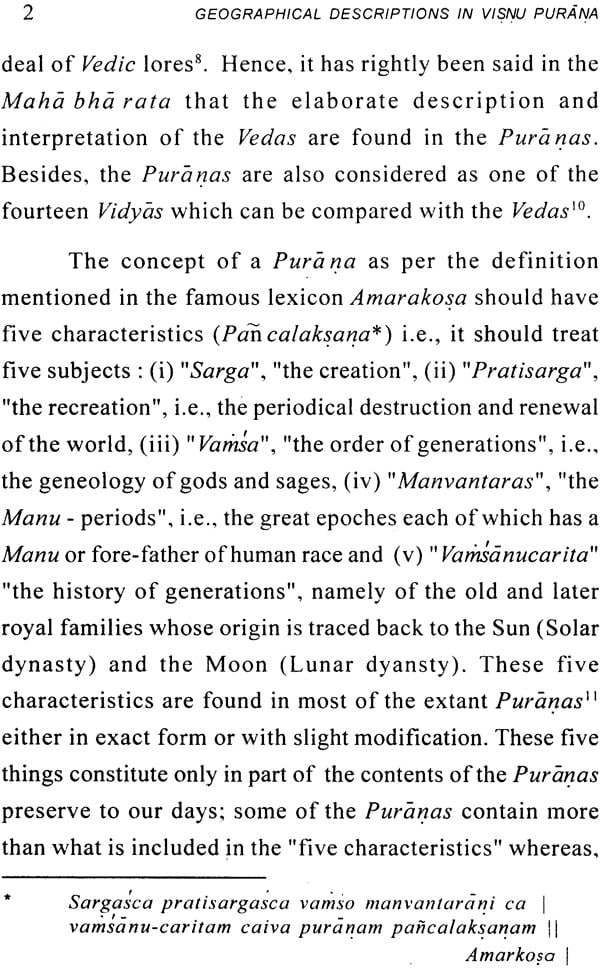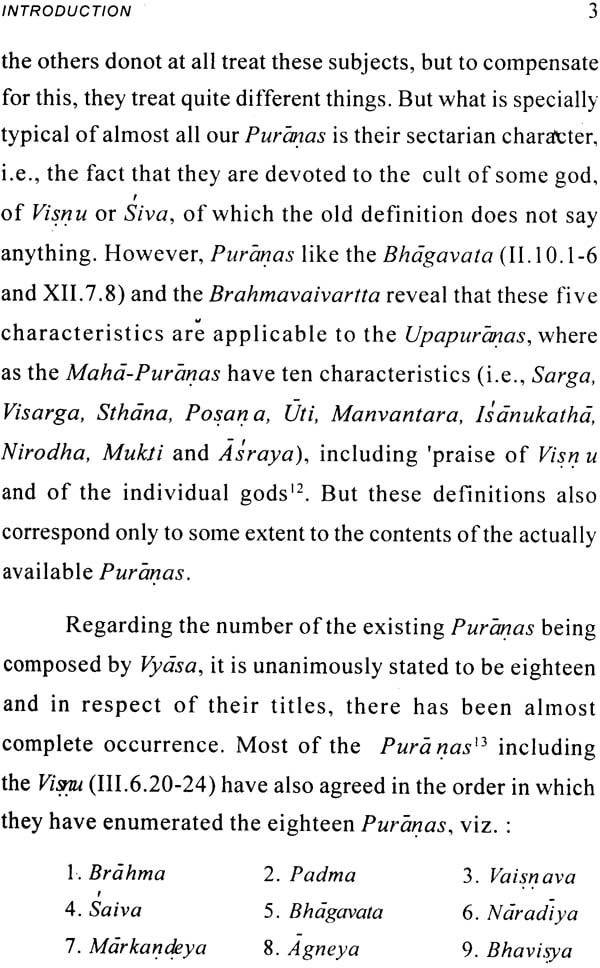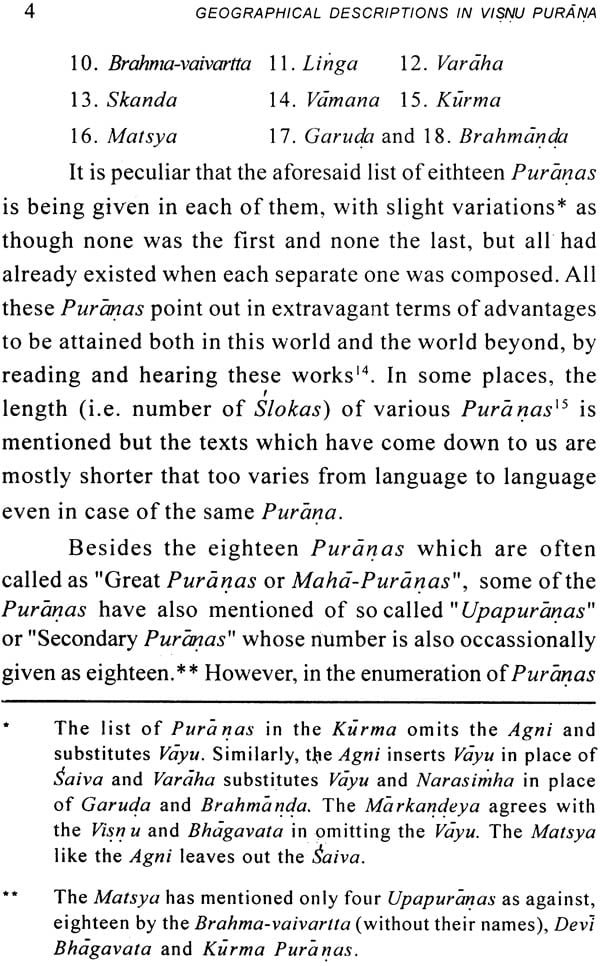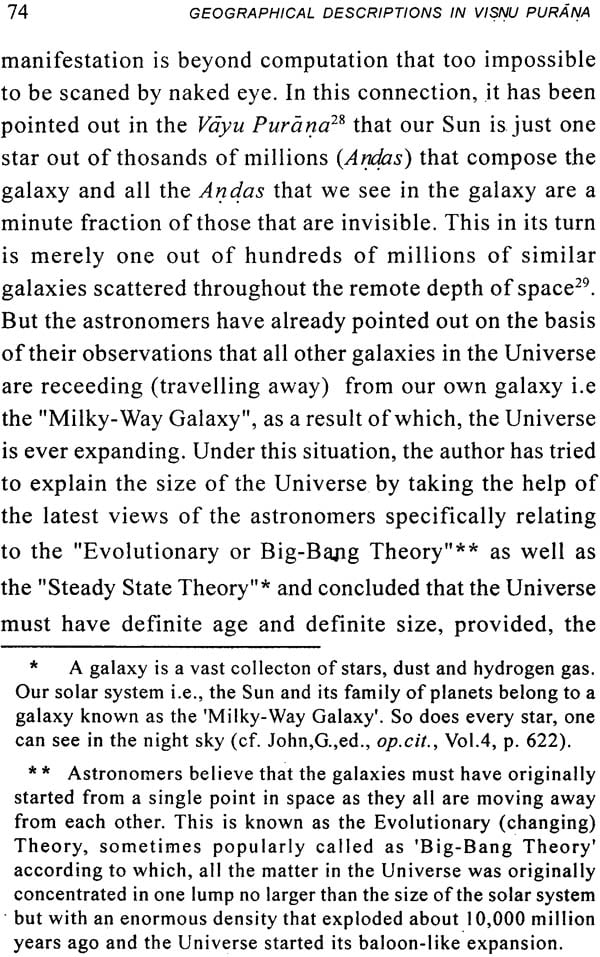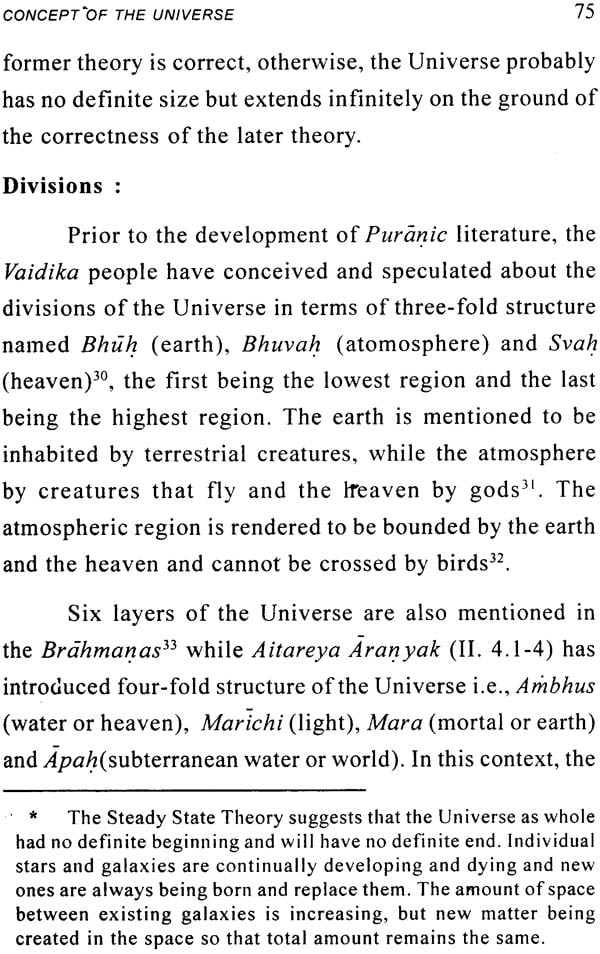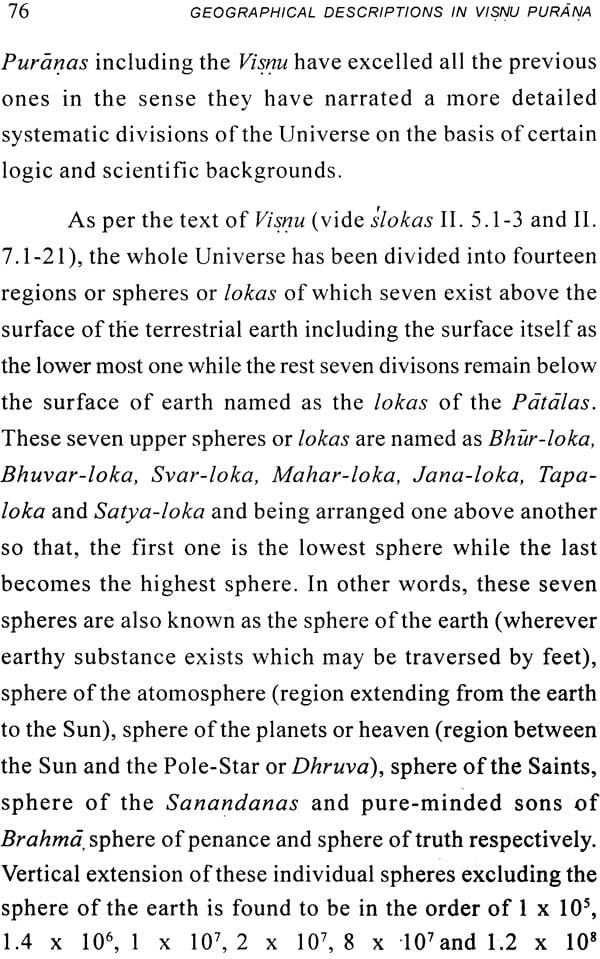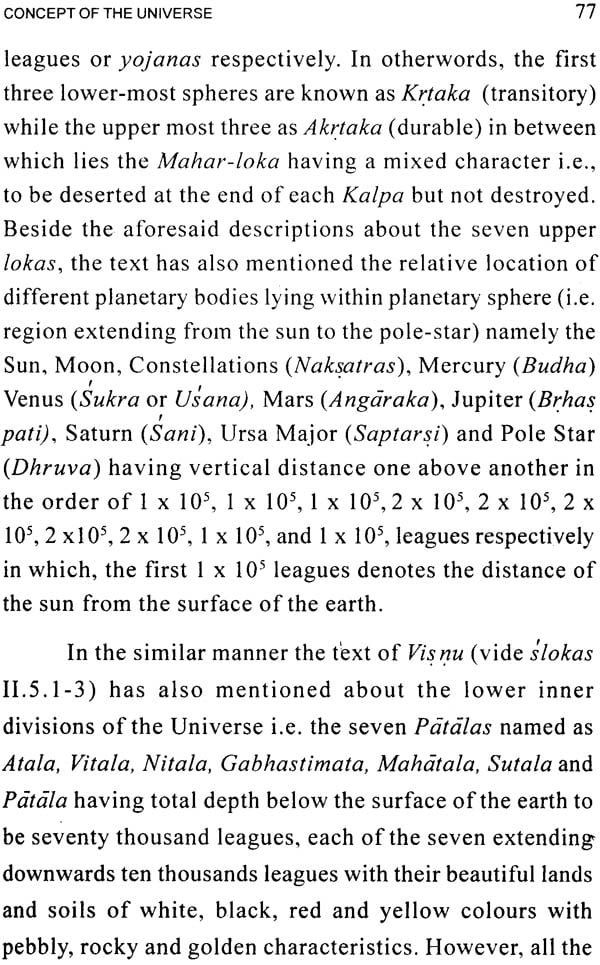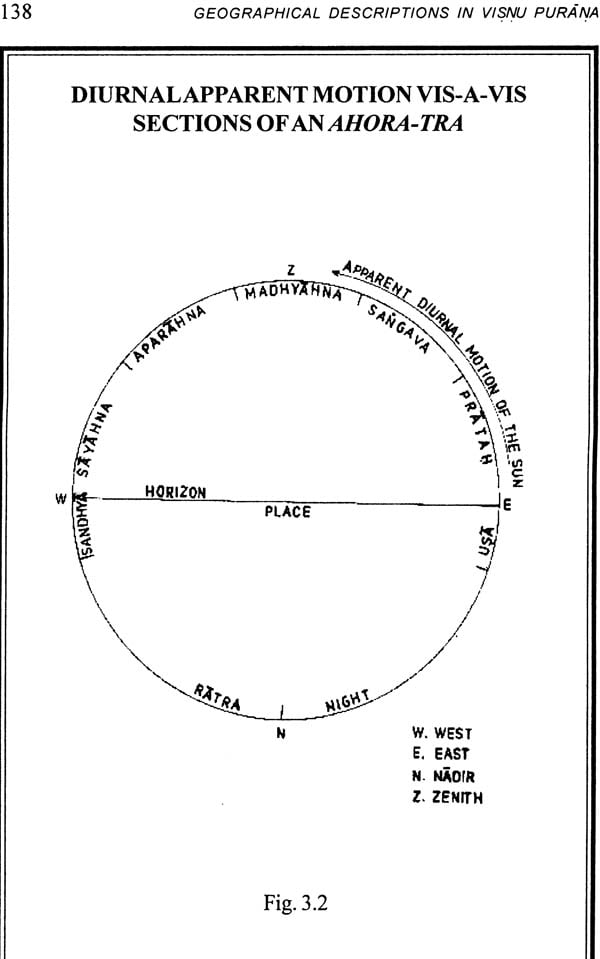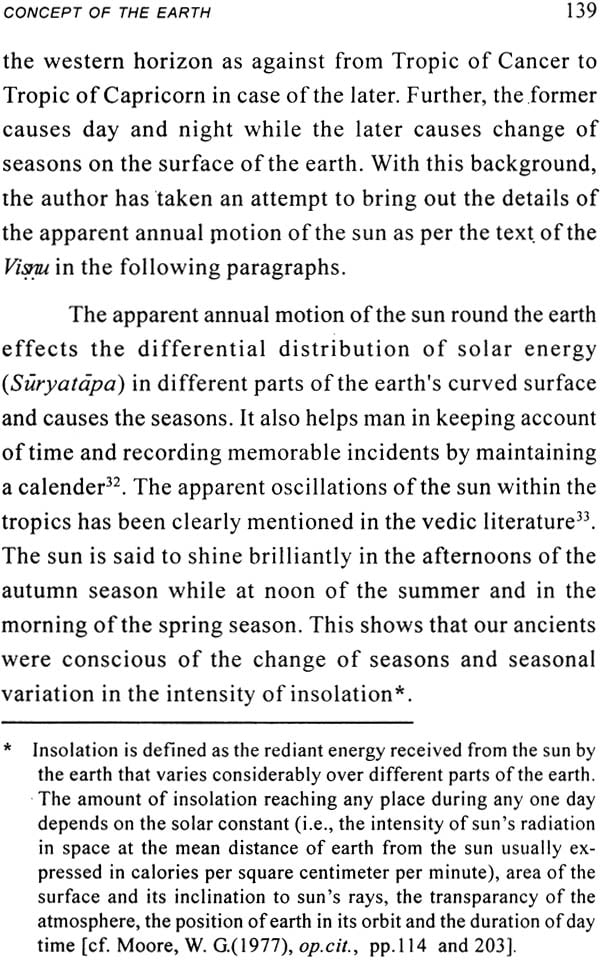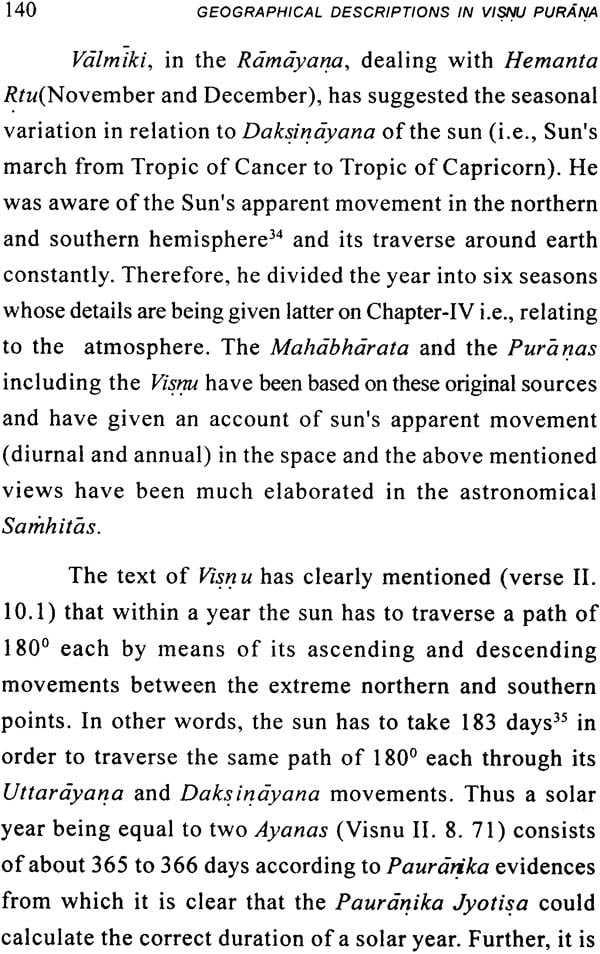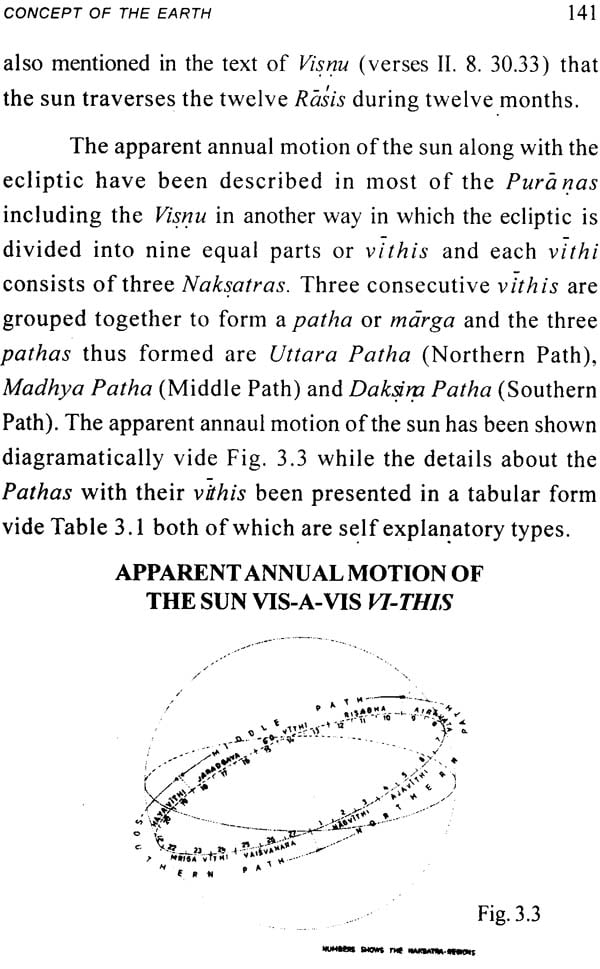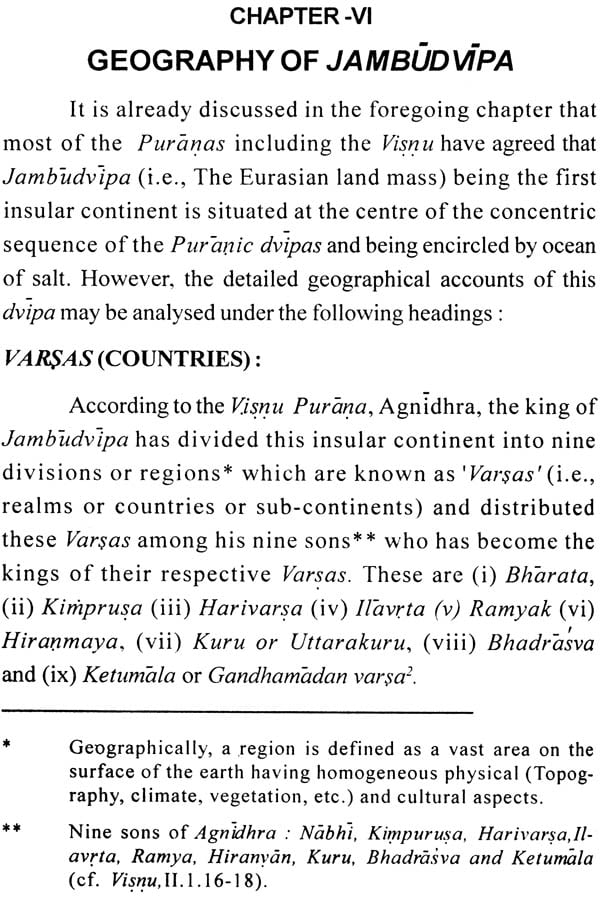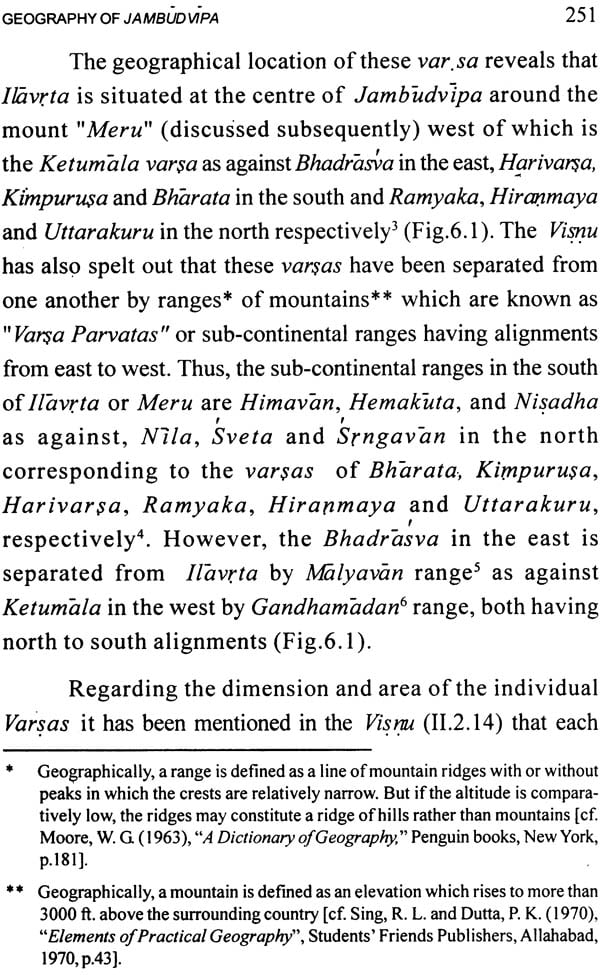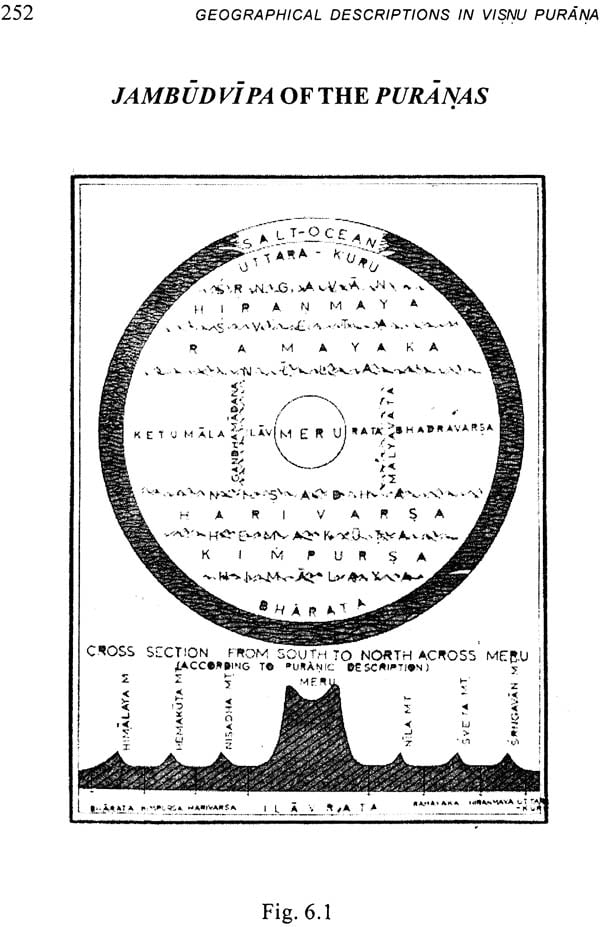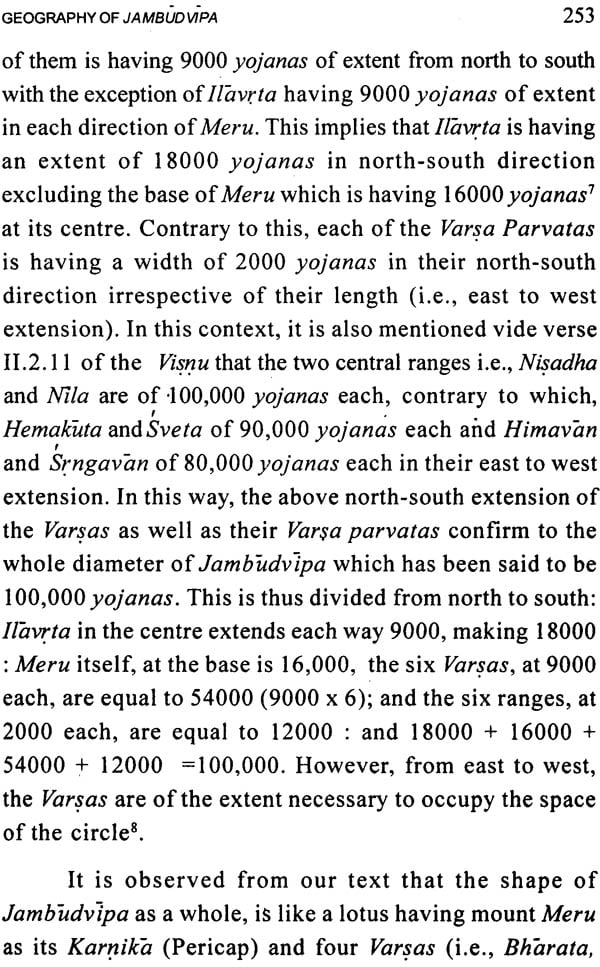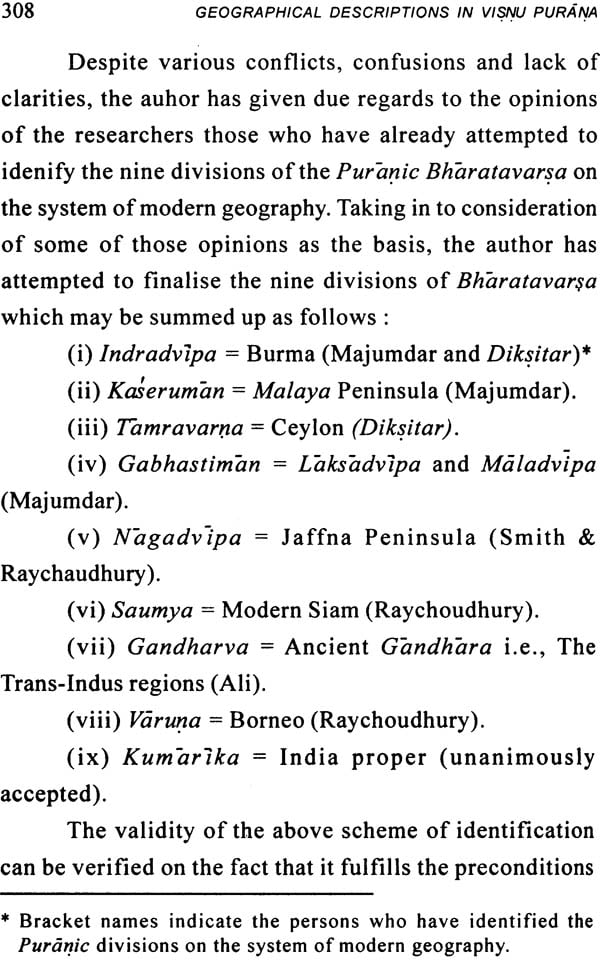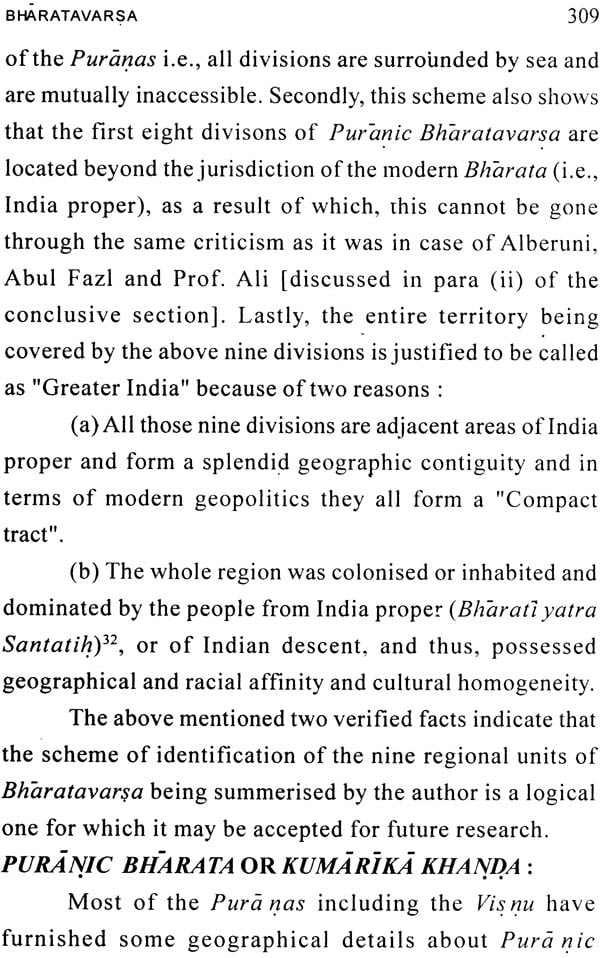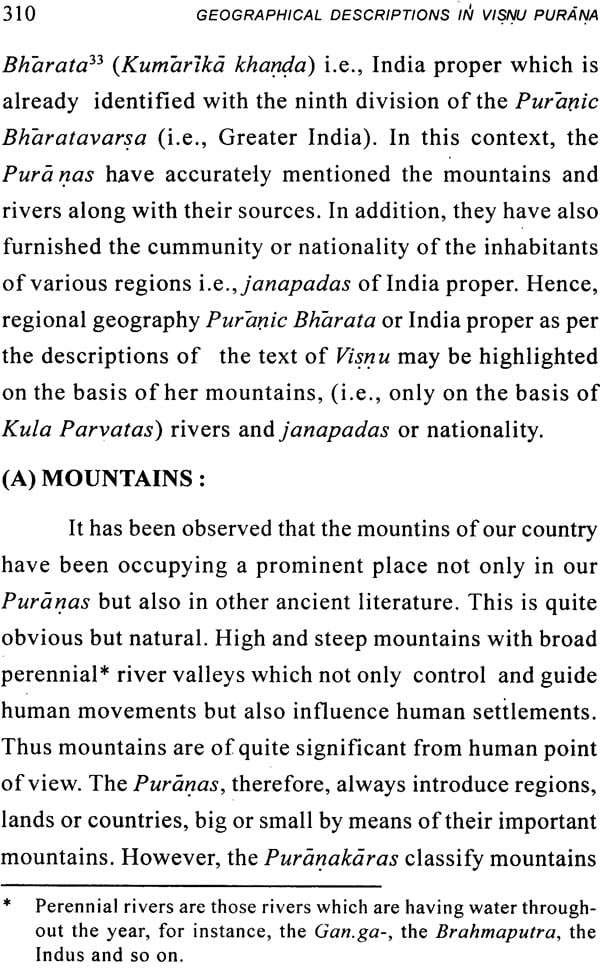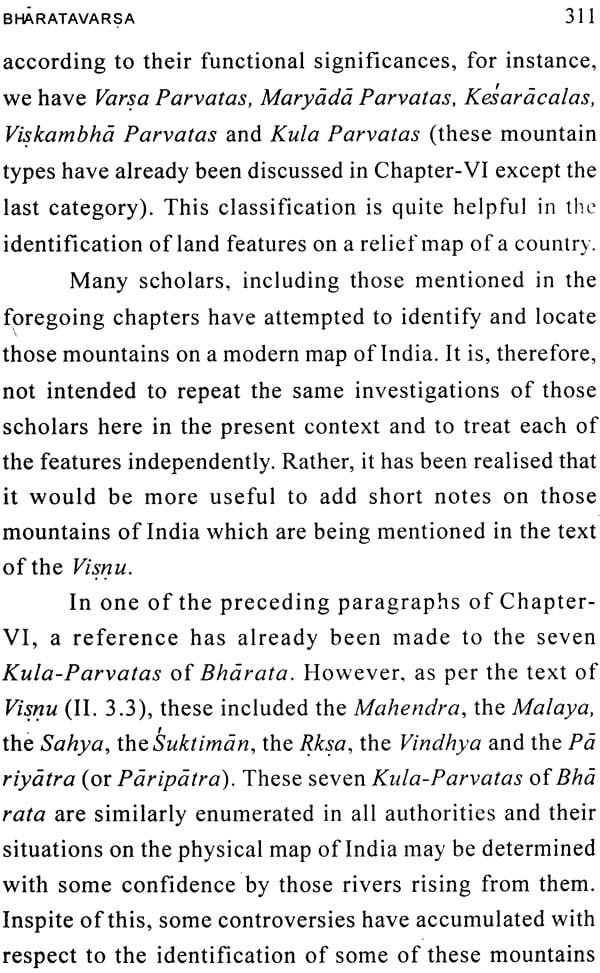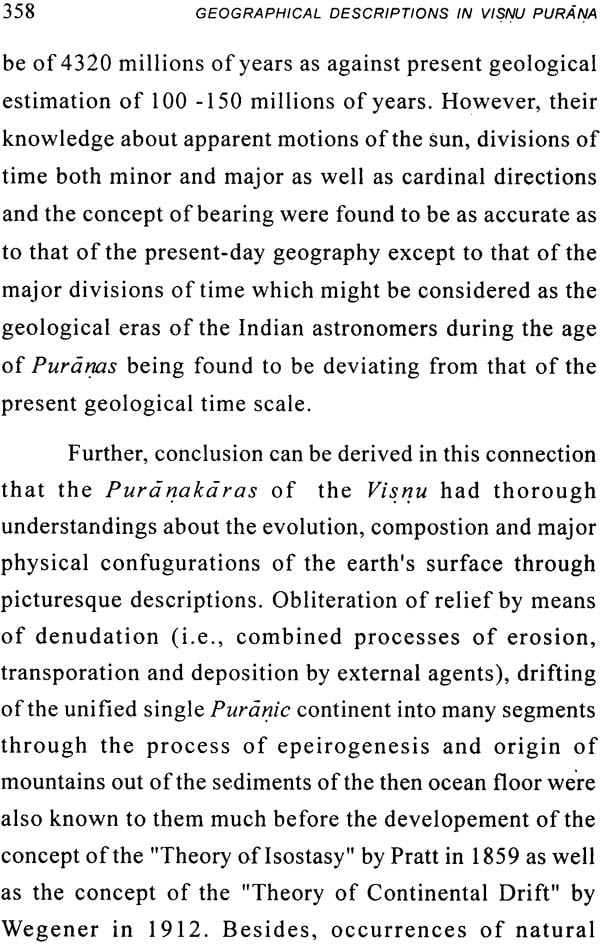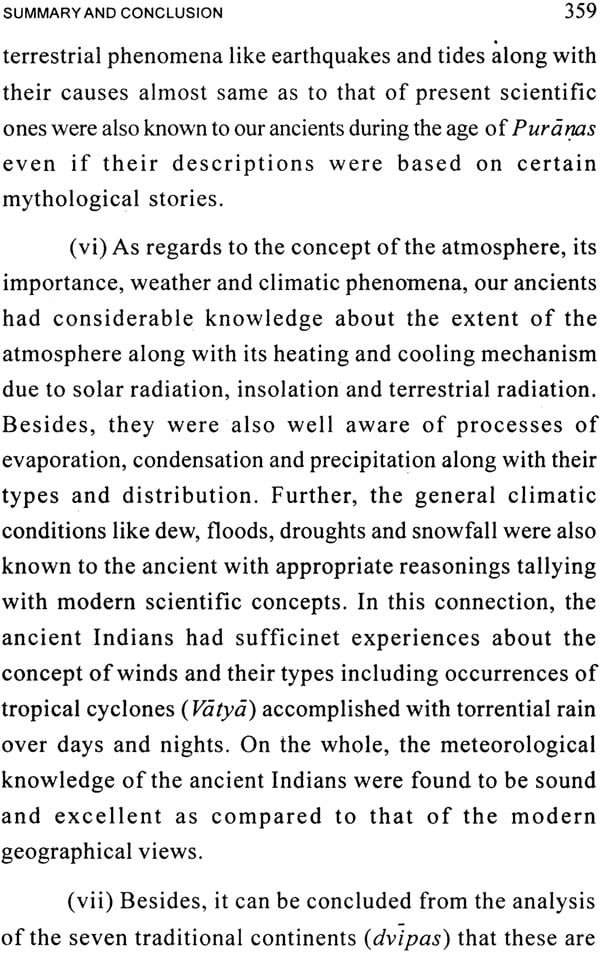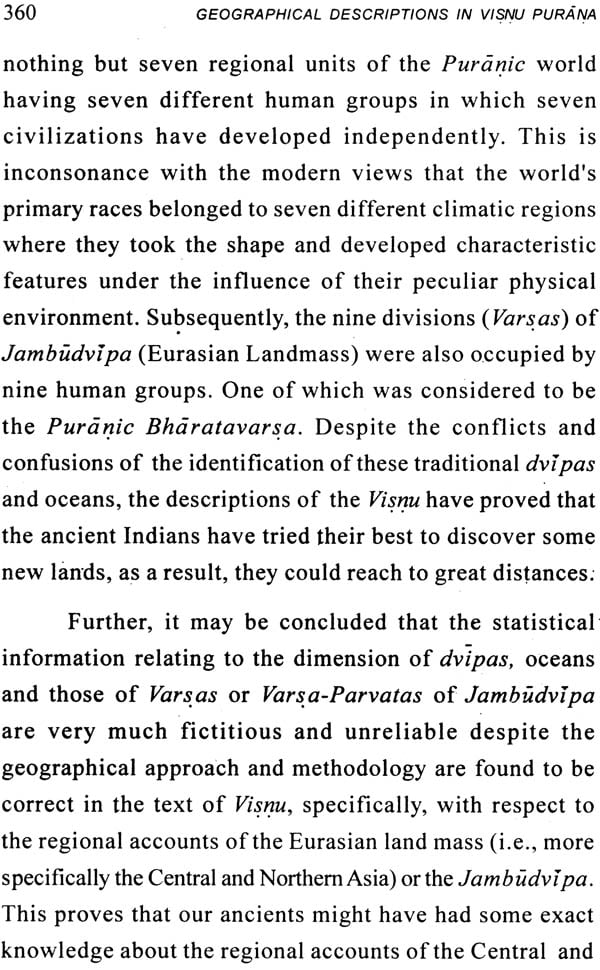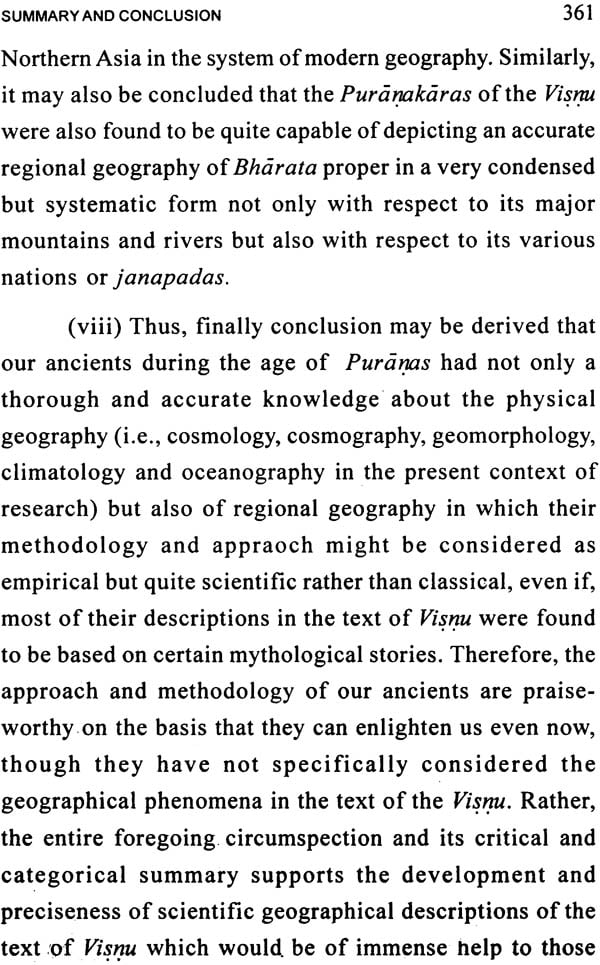
Geographical Descriptions in Visnu Purana
Book Specification
| Item Code: | NAC851 |
| Author: | Dr. (Mrs) Manjushree Tripathy |
| Publisher: | Rashtriya Sanskrit Vidyapeetha, Tirupati |
| Language: | English |
| Edition: | 2010 |
| Pages: | 404 |
| Cover: | Hardcover |
| Other Details | 10.0 Inch X 6.8 Inch |
| Weight | 870 gm |
Book Description
Dr. (Mrs) Manjushree Tripathy, Reader in Sanskrit is an approved well known ‘B’ — High artist of All India Radio, Cuttack and Doordarshan, Bhubaneswar. She was born on 17th June 1959 at Bhubaneswar. She was a brilliant student having an outstanding first class career both in Sanskrit and Music. She is presently the Reader and Head of the U.G. Dept. of Sanskrit, Ravenshaw University, Cuttack. She has contributed 40 scholarly research papers in various national level conferences and seminars and has published in various reputed journals. Besides, she has also five numbers of Sanskrit lyrics of her own in the Nikhilotkala Kavisammelanam, Orissa. She was conferred the title ‘Lokashree Kantheswar’ by Lokabbasa Pracarasamiti in 2002 for her audio cassette entitled ‘Gitima-dhuryam’ for popularizing Sanskrit among common people.
The geographical descriptions in the Vishnu Purana are systematic touching almost all branches & modem Geography. It is attempted in this work to assess the geographical knowledge of our ancients with respect to their methodology, approach and accuracy in relation to the system of Modem Geography.
The work has eight chapters. The first chapter provides an exhaustive introduction to the conceptual background of Puranas as well as the subject matter of geography. The second chapter is ‘Concept of the Universe’ dealing with Universe in terms of its origin, shape, size, etc. of the solar system. The third chapter deals with the concept of the earth in terms of its nomenclature, shape, size as mentioned in Visnu Purana. The fourth chapter deals with concept of atmosphere. The fifth chapter describes seven insular dvipas and seven samudras. The sixth chapter deals with the regional account of the Puranic Jambudvipa with respect to her nine Varsas, major mountains, major rivers and lakes. The seventh chapter concerns with the regional account of Puranic Bharatavarsa. The last chapter deals with the summary and conclusions of the entire work.
The Puranas or the Palaeo-literature of India in Sanskrit play a significant role in projecting the rich heritage and hoary tradition of the country. The etymological meaning of the Puranas connotes that the role of Puranas to construct the history of a civilization is also equally important. Some Puranas also predict the future based on which the human society takes preventive measures to avoid any chaotic or untoward situation.
It is traditionally believed that the author of all the Principal Puranas is Bhagawan Vyasa, who compiled four Vedas that emanated from the lips of Lord Brahma. Since Maharsi Vyasa is known as or almost all the principal Puranas composed by him deal with the present, past and future of human race of a particular region or nation and this, no doubt, constitutes the basic frame of history. As per the tradition, Puranas are characterized with five important aspects and dimensions such as primary creation, secondary creation, genealogies, calculation of ages and the dynastic accounts. Besides, so many other things like location of mountains, rivers, landscaping, forests and forest products, climate and climatic changes, environment and environmental impacts, Indian system of medicine and engineering, moral values and human ethics etc. have been narrated in the Puranas in a systematic and methodical manner. Because of the all-inclusive nature of descriptions, some Puranas like Agniare regarded as the “World Encyclopaedea”.
Historians are still divided in respect of the exact date of the composition of Puranas despite the fact that authorship of all the Puranas has been ascribed to Maharsi Vyasa because the controversy centering round the identity of Bhagawan Vyasa as the compiler of the Vedas, author of Brahmasutra and composer of Puranas is still persitent in the minds of the scholars. However, almost all the scholars and researchers have accepted the antiquity of the Puranas and some of them have been described to be authored during the period pertaining to B.C. “Visnu Purana” is one among such principal Puranas, which is known to the world of scholars and historians for its antiquity and other characteristics.
So many scholars, particularly the foreign ones, have done a lot of commendable works on Indian Puranas and the outcome of the researches made on Puranas, in certain cases, has changed the course of the history of human civilization, thereby paving the way for conducting further researches to meet the curious minds. Research is a continuous process and it always aims at unearthing the unknown, undisclosed and untouched points of a particular area in a systematic and scientific manner. While preparing the present dissertation on one of the antique and important Puranas, i.e. Visnu Purana, the author, Dr. Manjushree Tripathy, seems to be fullyguided by the basic tenets of fundamental research and has made sincere efforts to unfold the untouched dimensions of the Visnu Puranas. It is needless to mention that she has been completely successful in her endeavour.
Geography is a subject that deals with the scientific study of the earth’s surface, physical features, divisions, products, population, forests, mountains, oceans, rivers, lakes; climate, climatic changes etc.. All these things have been in existence from time immemorial, particularly from the inception of the creation because the creation depends upon these geographical aspects for its sustenance and continuance. Visnu Purana, being one of the ancient literary creations of one of the most ancient savants of the country, gives a clear picture of the geography of the entire “Jambu Dvipa” of which the present “Bharat” or India is a part only. It is badly needed that all these geographical descriptions, surfaced in the Visnu Purana, should be brought to the knowledge of the modem scholars and researchers particularly the geographers; so that the modem trend of investigation in the concerned field gets anew dimension of blending the old with new for the purpose of bringing the future generations closer to Indian culture and traditions. I have no hesitation to acknowledge that the book entitled “Geographical Descriptions in Visnu Purana” will act as a bridge between the world of ancient as well as modern scholars in respect of conducting some further analytical study in the concerned area to dive deep in to the matter. And for this unique achievement, Dr. Tripathy, the architect of the work, deserves our appreciation and commendation.
It is encouraging to note that the book has been included in the series of the Golden Jubilee Publications of Rashtriya Sanskrit University. The Rashtriya Sanskrit University, located at Tirupati, the sacred abode of the Lord of Seven Hills, is a premier institution in the field of higher learning and research in Sanskrit and is well known for its uncommon intellectual outputs for which it has been adjudged as “the best” in the country by the Tondon Committee, recently appointed by the Govt. of India to review the academic and research programmes of all the deemed Universities of the country. On the eve of its completion of fifty years of its successful existence, the Vidyapeetha has already embarked upon a scheme to celebrate the Golden Jubilee during the year - 2010 by organizing so many activities such as seminars, symposia, conferences, colloquiums etc. As a part of these series of activities, it has been decided to bring out at least fifty valuable publications during the year to mark the fifty years of existence of the institution. I am happy that so many learned authors including Smt. Tripathy have come forward with their manuscripts for publication under this series to highlight the intellectual outputs of the Vidyapeetha during the year of Golden Jubilee Celebrations. Besides, a committed team of scholars in collaboration with the department of Research and publications of our University, has shouldered the responsibility to execute the various plans and programmes of Golden Jubilee Celebration in a smooth and uninterrupted manner. May I avail this opportunity to express my profound sense of gratitude to those who have become the integral parts of this mega intellectual exercise.
I wish the publication a success and pray to Lord Venkateswar for His choicest blessings to be showered upon the author; so that many more meaningful works will be emerged in future from her continuous intellectual gymnastics.
The word Purana means ‘old’. The main object of compilation of Puranas is to preserve old Indian which have come down from remote antiquity. They are the sectarian compilations of different periods of mythology, philosophy, history, geography and sacred law, even if they axe now used for religious instructions. Puranas are not only considered as the store-house of different branches of knowledge but also claimed to be the only species of Indian literature next to the Vedas. In this regard, the Vaisnava or Visnu Puranas is claimed as one of the eighteen Mahapuranas in which Lord Visnu is praised and glorified as the Supreme Being, as one and only one God with whom both Siva and Brahma are identified. He is considered to be the creator as well as protector of the Universe including the terrestrial world. The essence of all Puranas elevates its position and dignity amongst all important Puranas for which it is known as Purana Samhita. In the context of the Maha Puranas, the Visnu occupies the third position next to brahma and Padma (Visnu, III, 6.20-23). But, from historical point of view, the Visnu should be given the status quo of the first and foremost position among all Purana as because, it has been composed by Paradara, the grand-son of Vasistha, whereas, all other Puranas have been attributed to Vyasa, the son of Paradara. Besides, the Visnu is perhaps the only Purana whose contents can give the reader the best idea and significance of Puranas in general. However literature surveys and discussions with experts indicate that the Visnu Purana is perhaps the only work that spells out the Parcalaksana of Purana (i.e., sarga, Pratisarga, Vamsa, Manvantara and Vamsanucarita) and also conforms to the definition of Purana exactly.
On the contrary, geography can be defined as that discipline of science which deals with the description of the earth as the home of man where relationship between man and its environment exists. In other wards, it is that branch of science which deals with the description of the earth in terms of its various aspects i.e. land, water, air, flora, fauna and any other phenomena relating to man, The beginning and development of geographical knowledge is directly related to the development of human civilization. As geography is the science of man-land or man-environment relationship, so the earliest record of man’s interest in the nature of physical world around him contains observations and speculations, for which, no science can claim a larger geneology than that of geography. Besides, it is also a known fact that most of the subject matter of geography have been derived from the gist of other disciplines of knowledge (i.e., both from pure sciences and humanities) because of its synthetic nature. In this context, the geographical descriptions in the Visnu Purana are not only found to be concise and condense but also systematic that too touching almost all branches of modern geography. Despite such store-house of geographical knowledge, this Purana has not yet been properly explored in this regard for the sake of the common people, even if, the Sanskrit Text of Visnu Purana have been translated by different scholars at different period of time in different languages.
Therefore, it is a humble attempt not only to bring out the hidden geographical descriptions lying within the text of Visnu but also to examine and assess the geographical knowledge of our ancients with respect to their methodology, approach and accuracy in relation to the system of modern geography.
In the present context, the descriptions of the text of Visnu indicates that the ancient Indians have in their own way, contributed a lot towards the formulation of geographical concepts in the investigation of physical phenomena. The modem scholars, following the sophisticated methods and scientific techniques of investigation developed in the western countries, are sometimes apt to dismiss the works of the ancients as primitive, elementary or orthodox. Nevertheless, even casual references in the original Sanskrit text of Visnu Purana reveal sometimes very consistent and thoroughly worked out concepts which are starting in their approach and accuracy and are compared very favourably with the latest scientific concepts of modem geography. In this respect, the terminology used in the text of Visnu might be very difficult in its character but found to be exceedingly precise, consistent and expressive. Therefore, we may say that a careful perusal of the text of Visnu may bring light to many forgotton ideas which may impart freshness to our modern scientific outlook in the field of geography and provides valuable guidance to work further in the field of Puranic Geography.
As regards previous works in this field, there is a great paucity of literature since no systematic work relating to Geographical Descriptions in Purana has yet been attempted. However, some sporadic and scattered materials collected by different scholars in an attempt to identify place-names or rendering faithful translations of original text of the Visnu are available. In this connection, the works of H.H.Wilson, B.C.Law, B.C.Hazra, S.N.Mazumadar, N.L.Dey, M.S.Ali, M.P.Tripathy, B.Dube, S.Saxena and H.D.Thakur are some of the valuable sources materials for the author to give the shape of the present work. The assessment of the works done in this field suggests that the field is very wide and so far not much investigated. The scholars who undertook such studies displayed little imagination and kept themselves confined to the preconceived patterns of study. Hence, the book entitled, “Geographical Descriptions in Visnu Purana” is nodoubt an attempt to unveil the geographical contents of the text of Visnu it seems to be quite vast, for which, the author has clearly demarcated its limit before giving the final shape of this work. First of all, it is confined to the Puranic descriptions of the Universe in terms of its creation and recreation, its divisions and celestial bodies including the solar system. Secondly, it includes the Puranic concepts of the earth in terms of its lighosphers, hydrosphere, atmosphere and biosphere along with their related phenomena that too in relation to man. Lastly, it also includes the regional account of the Puranic world with special reference to seven insular dvipas (Continents) and seven Samudras (Oceans), the Yambudvipa (Eurasian-Landmass), the (Bharatavarsa (Greater India) and the Kumarika khanda (lndia Proper). Hence, it is clealy indicated that the entire work is based on Puranic descriptions of those facts pertaining to that of physical geography including the concept of the Universe (Le, Cosmology, Cosmogony and Cosmography) and the regional geography as per the text of Visnu.
With these preliminary considerations, the author has attempted to organise the entire work within eight chapters, of which, the first one provides an exhaustive introduction to the conceptual background of Puranas as well as the subject matter of geography along with its relevance and scope in the field of Puranas addition, it spells out the importance of the Visnu Purana along with its contents and age of its compilation; trend and status quo of Puranic researches ; aims and objectives ; scope and limitations; data base, and methodology in order to give a systematic shape of the present work. The second chapter i.e., “Concept of the Universe” is devoted to bring out the Puranic Universe in terms of its origin, shape, size, dimensions and divisions along with different celestial bodies including the solar system.
In the third chapter, an emphasis has been given to spell out the Puranic concept of the earth (Prthivi) in terms of its nomenclature, shape, size, extension and age as per the text of the Visnu. Besides, efforts have also been made in this section to give an account of the cardinal points and directions of the earth; apparent motions of the sun and their consequences; divisions of time, evolution and composition of the earth’s surface, causes and consequences of earthquakes along with oceanic phenomena like waves and tides.
However, the fourth chapter has exclusively attempted to bring out the concept of the atmosphere in terms its extent and structure along with certain important weather and climatic phenomena as per the text of the Visnu, in which, priority has been given to the concept of insolation and terrestrial radiation; concept of clouds and precipitations along with related phenomena like flood, draught and hydrological cycle. Further, attempt has also been given to explain the concept of wind and occurances of cyclones, thunders, lightnings and rainbows.
In the fifth chapter, an attempt has been made to bring out the Puranic description of the seven insular dvipas and seven samudras with respect to their arrangements, shapes, dimensions and nomenclatures in terms of modern geography. On the contrary, the sixth chapter is devoted to bring out the regional account of the Puranic Jambudvipa with respect to her nine Varsas, major mountains, major rivers and lakes. The seventh chapter has been concerned with the regional account of Puranic Bharatavarsa with special reference to Kumarikakhanda (Bharata Proper) along with her Kulaparvatas, major rivers, nations and places of Puranic importances. The last chapter deals with the summary and conclusions of the entire work. Thus, the present piece of work is considered to be very important both in the fields of Sanskrit as well as Geography because of the existence of a strong inter-relationship between these two branches of knowledge, that too, specifically in the field of Puranas verses Geography since long past. The fanciful and legendry Puranic descriptions of the text of Visnu can only be studied in proper ways provided its contents can be properly explored and highlighted through modem means of geography and vice-versa. Therefore, the present work is definitely of immense significance in both the fields (i.e., Sanskrit and Geography) in order to assess and ascertain the ancient Indians with respect to their methodology, approach and accuracy in relation to their geographical knowledge being made available in the form of Puranas.
The author feels to reveal that the present piece of work is the out come of her Ph.D. Thesis submitted to Utkal University, Bhubaneswar in December, 2004 and approved for award of the degree in January, 2006. In this connection, she expresses her deep sense of gratitude to her teacher Dr. G.K. Dash, Professor in Sanskrit, P.G. Dept. of Sanskrit, Utkal University, Bhubaneswar for his scholarly guidance and thought provoking suggestions that enabled her to complete this work. She extends her indebtedness to Dr. H.K. Satpathy, Vice-Chancellor, Rastriya Sanskrit Vidyapeetha, Tirupati not only for his voluntary cooperation on behalf of the Vidyapeetha to publish the manuscript in its existing form but also for his timely help as the former professor in Sanskrit, Sri Jagannatha Sanskrit University, Puri in providing some of the secondary source of materials along with certain valuable suggestions for the completion of this inter disciplinary work. She also equally expresses her sincere gratitude to her esteemed husband Dr. D. Tripathy, Reader in Gography, B.J.B. (Auto.) College, Bhubaneswar not only for providing geographical materials and maps but also for his systematic, critical and analytical suggestions in each step of this work failing which the present form of work would not be possible. Her special thanks to Sri P.K. Maharana, Lecturer in Geography, Narasinghpur College, Narasinghpur in the district of Cuttack for the immense pain that he has taken to finalise some of the geographical maps and diagrams in the context of the present work. She is extremely indebted to her father-in-law late I.C. Tripathy and her father late R.K. Tripathy and mother Smt. M.S. Devi for their inspirations that inspired her to complete this work. Last but not least, she records her sincere feelings to her daughters, ‘Amrita’, ‘Arya’ and ‘Atmaja’ not only for their cooperation but also their constant inspirations and encouragements during the entire period of this work.
| Page No. | |
| Foreword | i |
| Preface | vi |
| List of Illustrations | xvii |
| List of Tables | xix |
| Abbreviations | xx |
| System of Transliteration | xxiii |
| CHAPTERS: | |
| I Introduction | 1 |
| Preliminary Considerations | 1 |
| Importance of the Visnu Purana | 11 |
| Date of the Visnu Purana | 16 |
| Trend and Statusquo of Researches on Puranas | 18 |
| Selection of the Topic | 25 |
| Aims and Objectives | 28 |
| Scope and Limitations | 30 |
| Data Base and Methodology | 33 |
| Organisation of the Study | 35 |
| II Concept of the Universe | 47 |
| General Character of Puranic Cosmology | 48 |
| Creation of the Puranic Universe or Brahmanda | 57 |
| Cosmic Nucleus and Primary Creation | 59 |
| Cosmic Cycles and Secondary Creation | 63 |
| Geographical Views vis-a-vis Origin of the Earth | 67 |
| Sphere of the Universe | 72 |
| Celestial Bodies | 83 |
| The Solar System | 90 |
| The Sun and the Planets | 94 |
| The Sun and its Significance | 97 |
| The Sun - the Source of Light and Radiation | 99 |
| The Rays of the Sun (Surya-rasmi) | 100 |
| Sapta-devas in the Surya Mandala | 102 |
| Origin of the Moon and its Light | 104 |
| Phases of the Moon (Candra-kala) | 107 |
| Eclipses (Grahana and Paraga) | 108 |
| Conclusion | 112 |
| III Concept of the Earth | 119 |
| Shape | 121 |
| Size and Extension | 124 |
| Age | 126 |
| Cardinal Points and Directions | 127 |
| The Apparent Motions of the Sun | 130 |
| Diurnal Apparent Motion | 131 |
| Apparent Annual Motion | 137 |
| Divisions of Time (Kala) | 145 |
| The Surface of the Earth | 147 |
| Evolution and Composition of the Earth’s Surface | 149 |
| Earthquake | 157 |
| Sea and Oceanic Phenomena | 159 |
| Conclusion | 162 |
| IV Concept of the Atmosphere | 168 |
| Extent and Structure | 169 |
| Insolation and Temperature | 172 |
| Season (Rtu) | 175 |
| Clouds and Rainfall | 180 |
| Other Atmospheric Phenomena | 192 |
| Snow and Glacier | 193 |
| Winds | 195 |
| Cyclone (Cakravata) | 197 |
| Conclusion | 199 |
| V Puranic Continents and Oceans | 206 |
| Shape and Arrangement | 207 |
| Size | 208 |
| Nomenclature | 213 |
| Varsas, Major Mountains and Major Rivers | 214 |
| Puranic Continents and Oceans on the System ofModern Geography | 217 |
| Conclusion | 243 |
| VI Geography of Jambudvipa | 250 |
| Varsas (Countries) | 250 |
| Parvatas (Mountains) | 255 |
| Analysis and Identification of the Mountains | 261 |
| Rivers and Lakes | 276 |
| Analysis and Identification of the Rivers and Lakes | 280 |
| Conclusion | 288 |
| VII Bharatavarsa | 296 |
| Nomenclature | 296 |
| Shape, Size and Dimension | 299 |
| Regional Divisions | 300 |
| Puranic Bharata or Kumarika Khanda | 309 |
| Mountains | 310 |
| Rivers | 318 |
| Janapadas or Communities | 323 |
| Conclusion | 330 |
| VIII Summary and Conclusion | 336 |
| Major Findings | 341 |
| Conclusion | 355 |
| Appendix | 363 |
| Bibliography | 370 |
